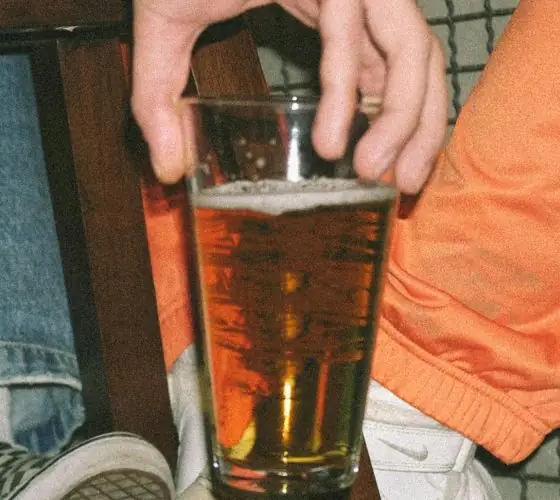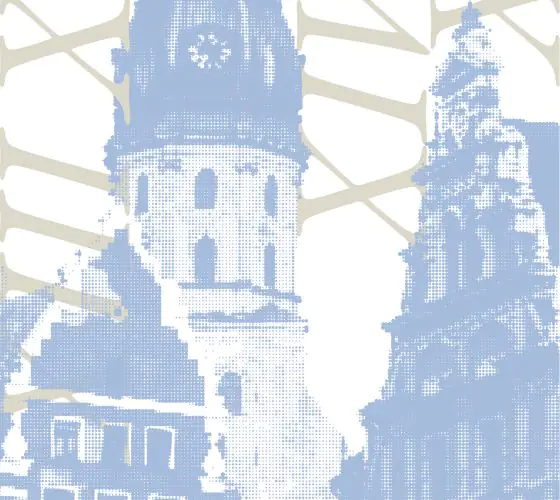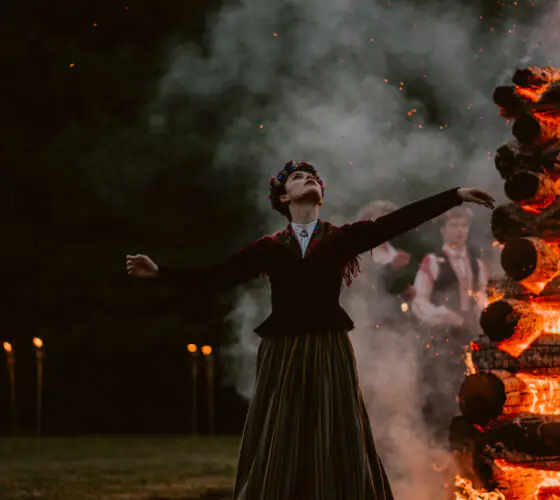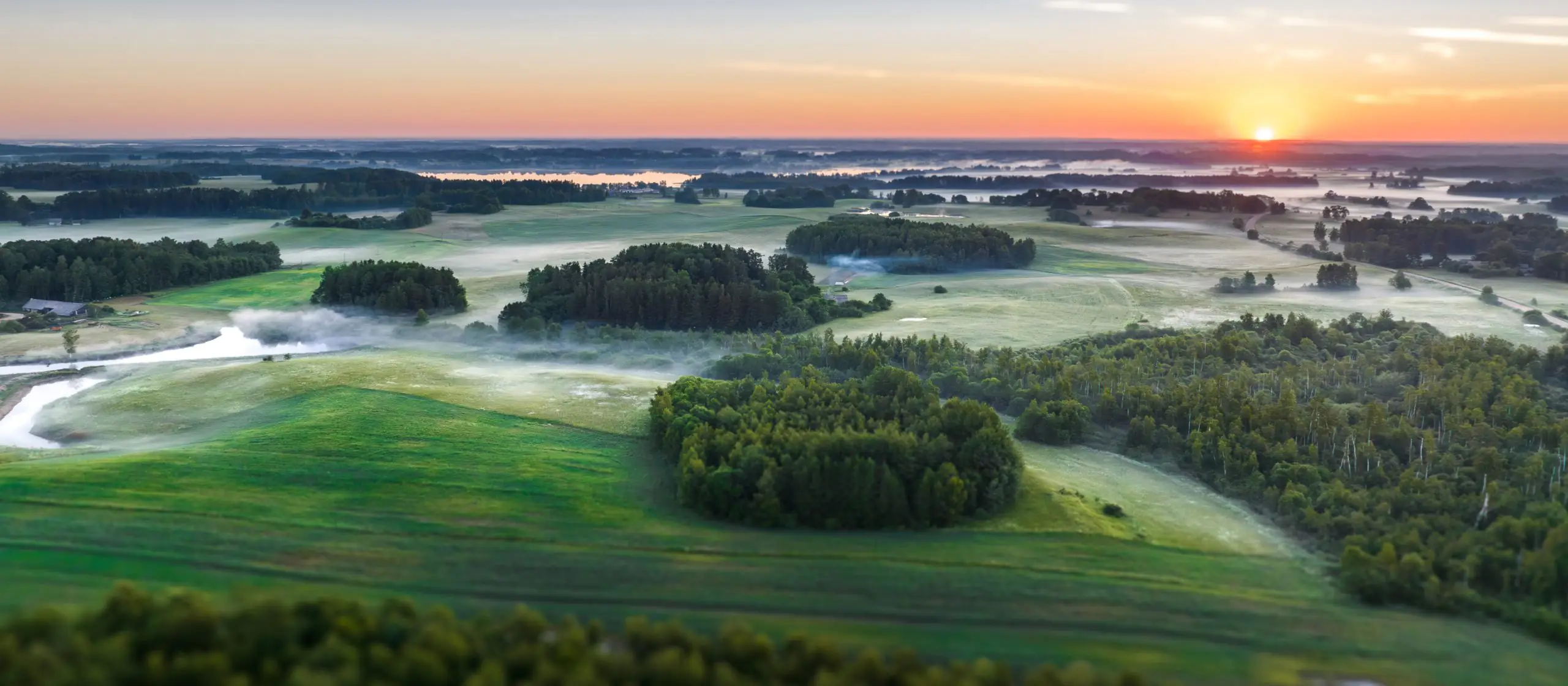
The Landscape of Vidzeme Hillocks
Latvia has its own mountainous region—the Vidzeme Upland, stretching almost from the banks of the Daugava River to the border with Estonia. This hilly terrain can be called mountains only conditionally, but in the context of natural landscapes of the country the local landscapes are characterized by their picturesque hillyness.
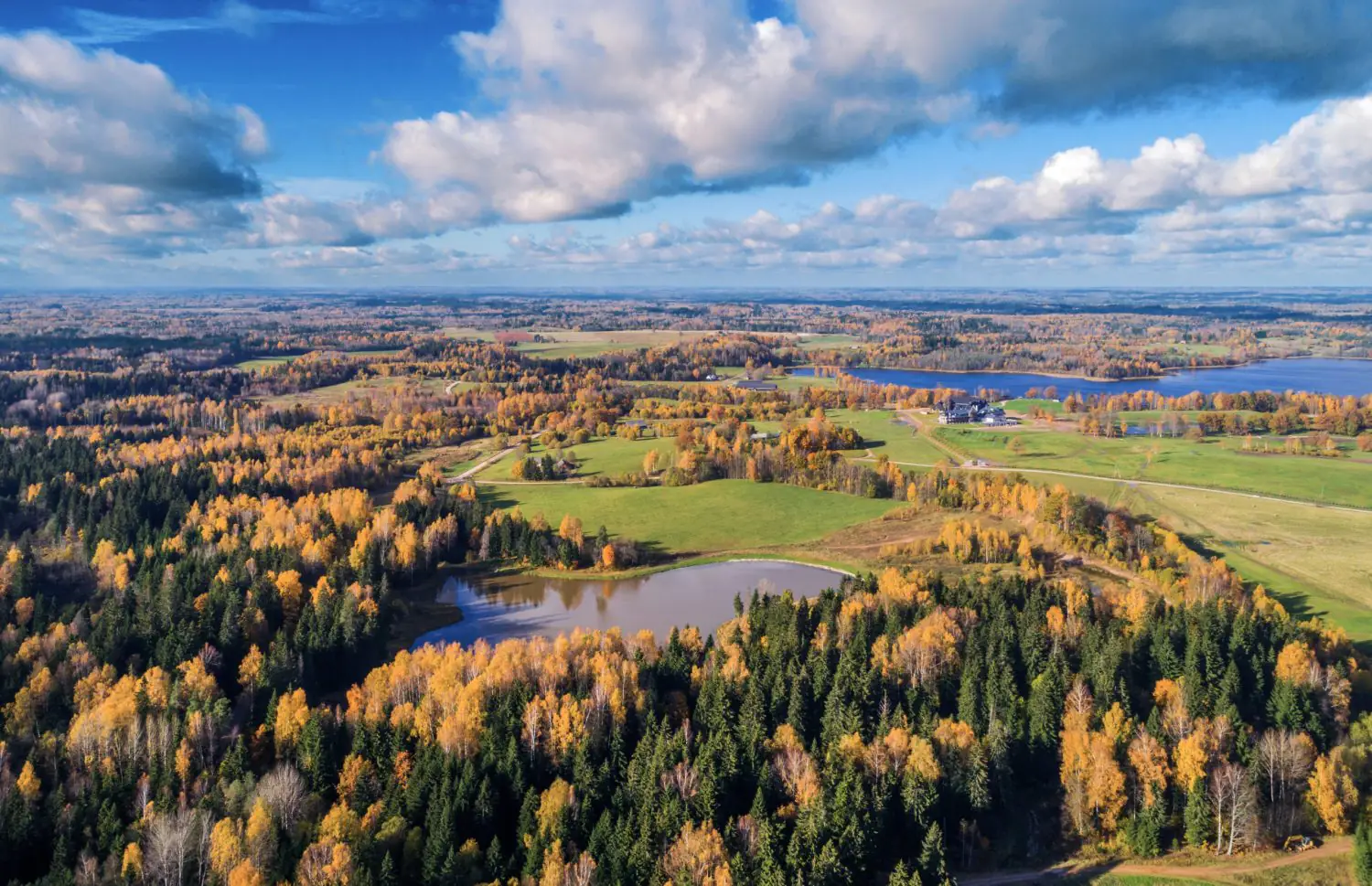
stock.adobe.com
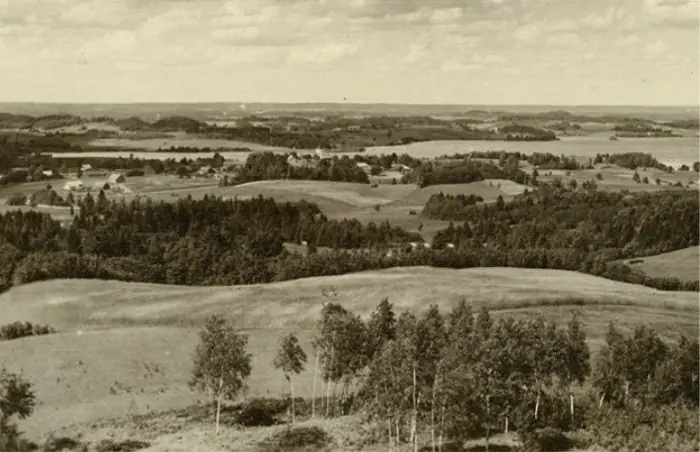
Not far from Vestiena settlement there is the highest point of Latvia—the mountain Gaiziņkalns with the height of 312 meters. But it is unlikely that you will experience the effect of delight from the sharp height difference, as in the valley of the river Gauja, because from the foot to the top here is only 62 meters. But don’t be lazy and conquer this mountain—from here you can enjoy beautiful views of the hilly valley with many lakes.
The local topography has influenced the principle of settlement and the construction of houses. The most fertile land is found on the slopes, where more sunlight reaches. For farming in these areas, patches of forest were cut down. In the lowlands between the hills, trees remained, creating a kind of green lace with inserts of flowering fields, orchards and blue lakes.
The Vidzeme Upland are particularly beautiful in winter. On average, more snow falls here than in other parts of Latvia. The snow-white winter in these areas usually starts 10–15 days earlier, and the snow cover in the lowlands between the hills can last until mid-May. Temperatures in the cold season are consistently lower than in neighboring Latgale or in the flat part of Vidzeme.

For these reasons, the Vidzeme region is popular with winter sports enthusiasts. There are equipped skiing and snowboarding tracks, for example, on the slopes of the mountains Gaiziņkalns in the Madona Municipality and Ķauķu kalns near the town of Alūksne.
For several years, skiers from all over Latvia have been coming to the guest houses on the territory of the former railway station in Ērgļi. The friendly hosts have created a great place for friendly meetings, where you can do sports together, taste delicious dishes made from local products, and study the history of these places through the numerous vintage items displayed in the interiors of the station.
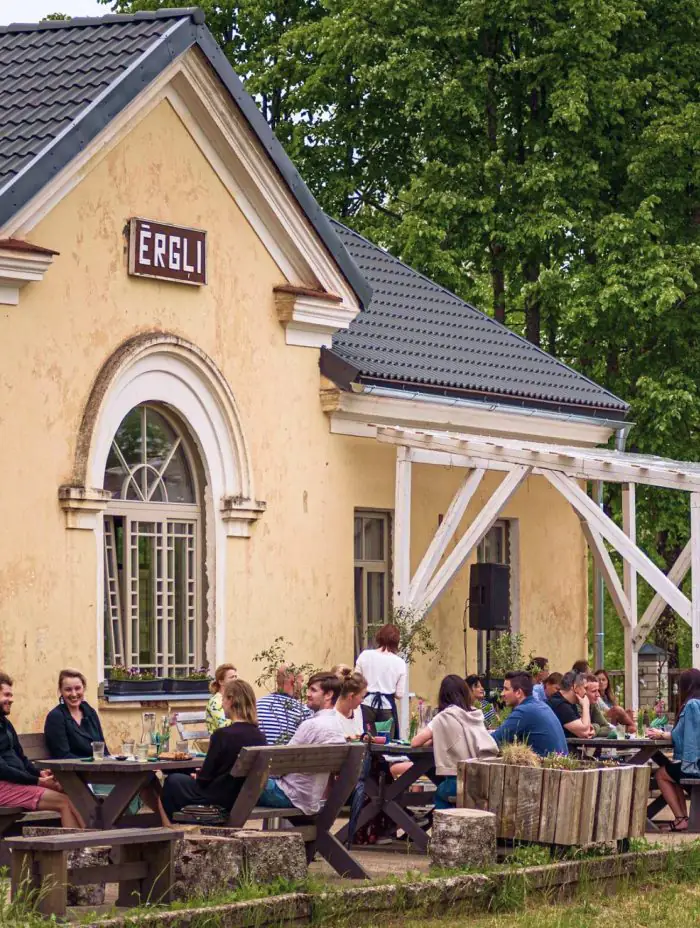
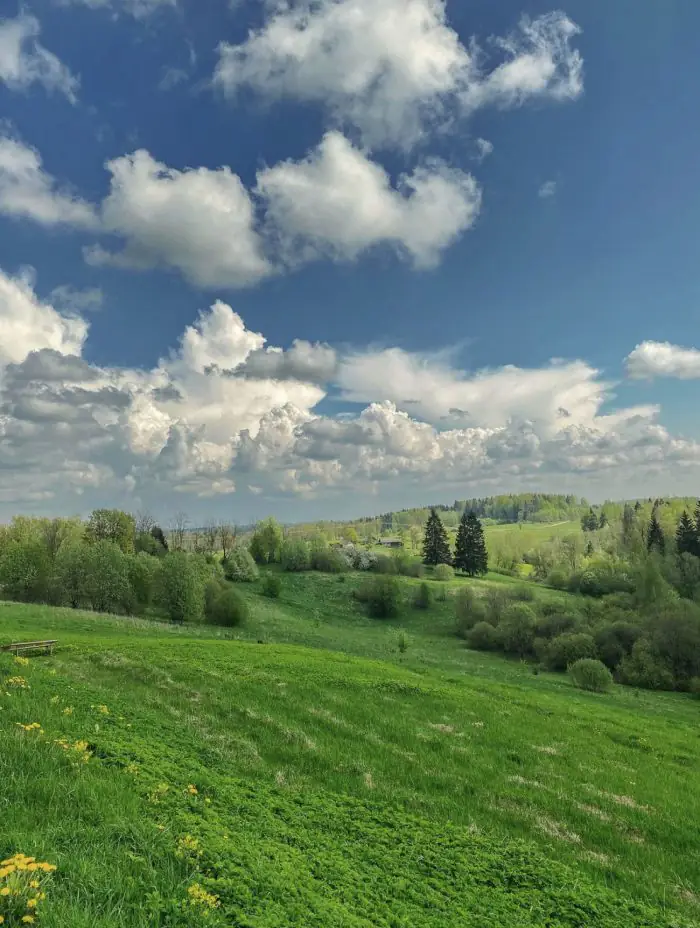
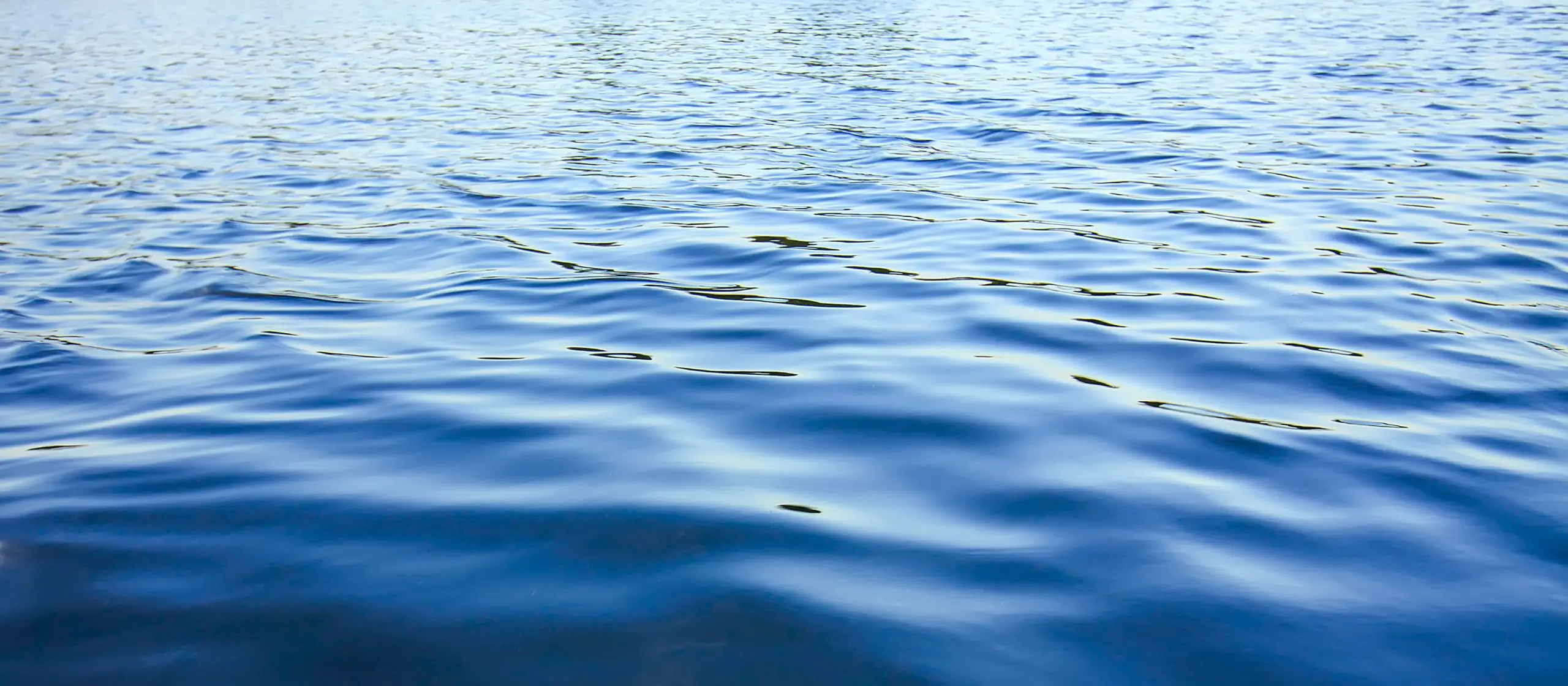
stock.adobe.com
Latgale—the land of lakes
It is impossible to imagine Latgale without numerous blue lakes of glacial origin. The hilly territory of the Latgale Upland is a water body of bizarre shape with many wooded islets. For example, there are about 35–45 of them on Lake Ežezers. The string of lakes is connected by rapids streams dotted with mossy boulders.
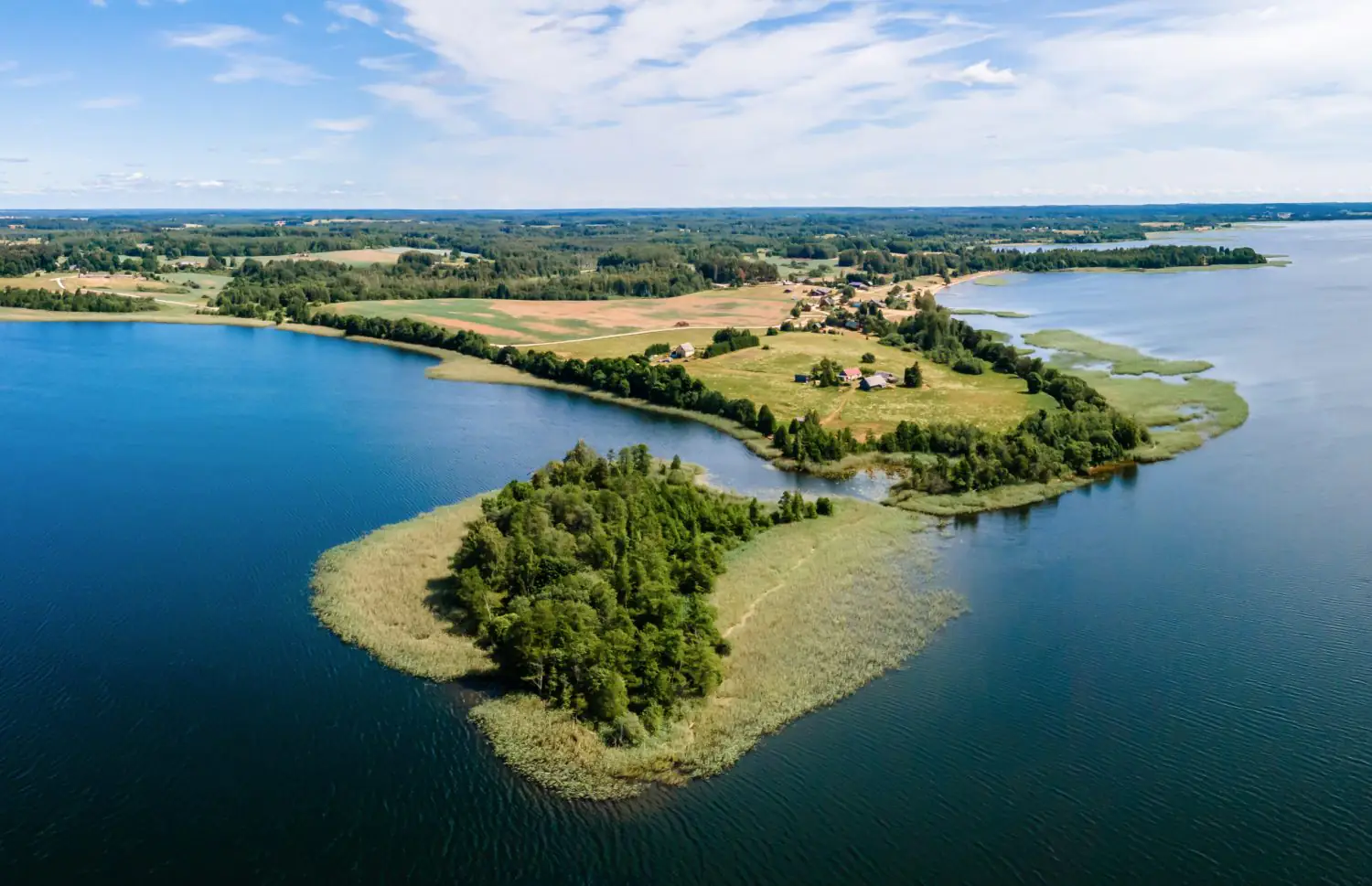
stock.adobe.com
The main «artist» of this mesmerizing landscape is an ancient glacier that cut through the sculptures of moraine hills, kames, drumlins, and deep folds that eventually filled with water. Other lakes in the Baltic Uplands, from Denmark to Estonia, were formed in the same way. The hills here are quite high—for example, from the top of Mākoņkalns there is a magnificent view of Lake Rāznas, which is called the «Latgalian Sea». The local lakes are also the deepest in the whole country, and Lake Dreidzs is the deepest in the Baltic States (66.2 meters, which exceeds the maximum distance from the surface to the bottom of the Gulf of Riga).
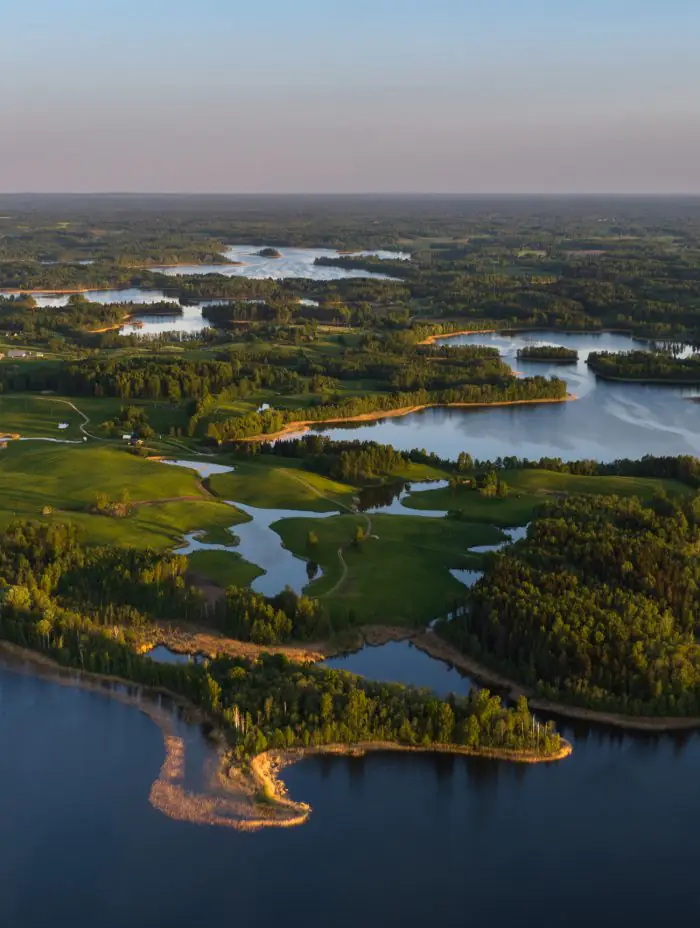
stock.adobe.com
Cultural elements are also woven into the lakes pattern—Latgalian compact villages with log houses, Catholic churches, old manor houses, fields and pastures. There are relatively few forests here, as the land was intensively cultivated, which determined the characteristic image of the Latgalian landscape: open space dotted with birch groves. However, the image of this region began to change in the interwar period, when villages began to turn into single farmsteads. Landscapes of those years can be found in the paintings of Francisks Varslavāns, Vitālijs Kalvāns, Nikolajs Bogdanovs-Beļskis.
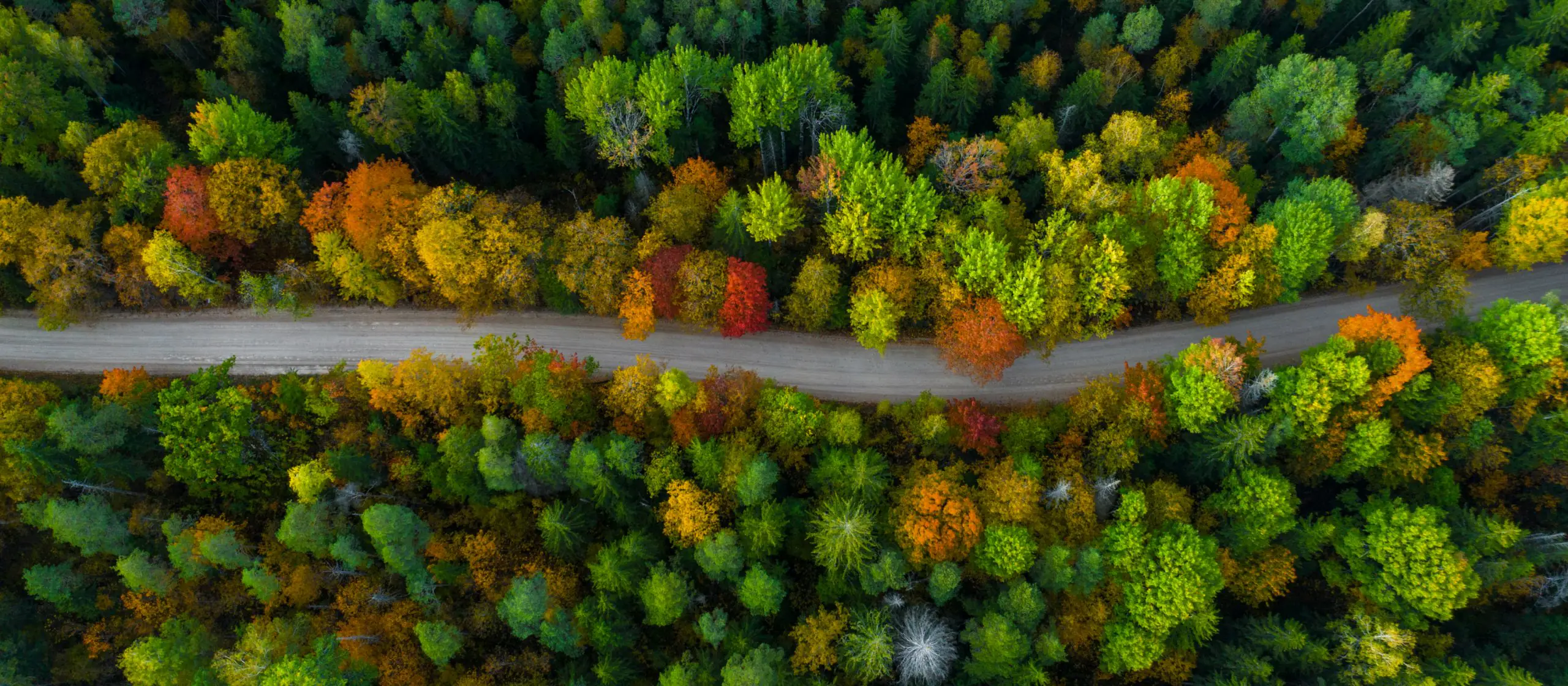
Forests and swamps
Just over 50% of Latvia’s territory is covered with forests. This is one of the highest figures in Europe: only Finland (73%), Sweden (69%), Slovenia (62%) and Montenegro (61.5%) have more trees; Latvia shares fifth place with Estonia.
The most common tree species are pine, birch and spruce, which together cover about 83% of the total forest area. Oak, so important for the country’s culture, is much rarer, but it attracts attention with its imposing appearance. Pine is common along the sea coast and on inland sandy soils: for example, in the vicinity of Strenči and Smiltene. Spruces are more common in the uplands: around the towns of Alūksne and Madona. Birches grow on former arable land and near bogs, especially in Latgale.

Some parts of the country are densely covered with forests, such as Ventspils Municipality and west of Sēlija. Between Bauska and Aizkraukle there is a small settlement called Taurkalne, surrounded by an impassable bowl for many kilometers—here you can feel the forest spirit of Latvia.
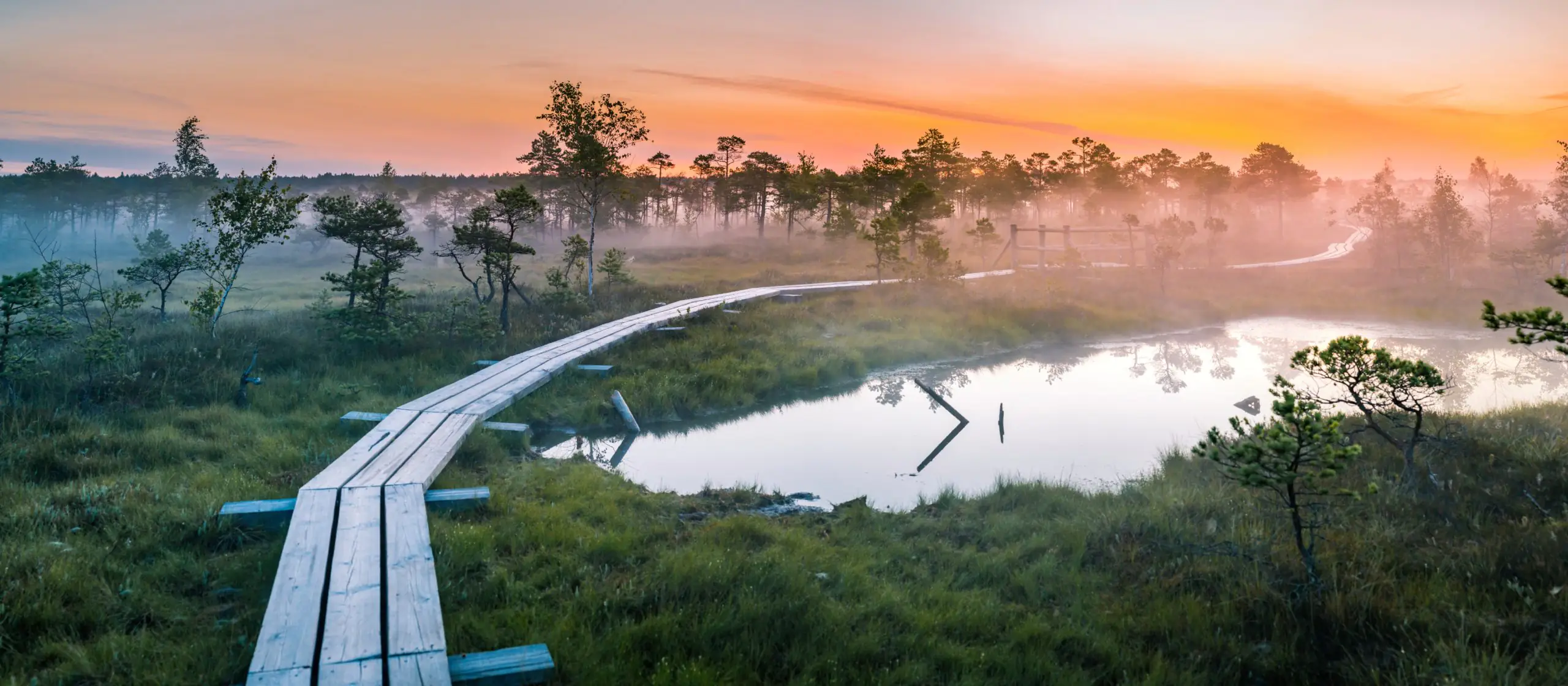
stock.adobe.com
The country’s special value is its bogs, which occupy about 10% of the territory. Perhaps the most famous of them is located near Ķemeri. Here you can enjoy the local flora and fauna with maximum comfort. We wrote about this place in detail in the article about nature trails in Jūrmala.

Latvia’s largest bogs are located on the border of Latgale and Vidzeme: the Teiči Nature Reserve, as well as the marshy area around the country’s largest lake Lubāns. There are wooden trails and bird-watching towers here. One of them stands a few meters from the highway between Jēkabpils and Rēzekne. You can learn about the history and natural diversity of these places at the Varakļāni museum.
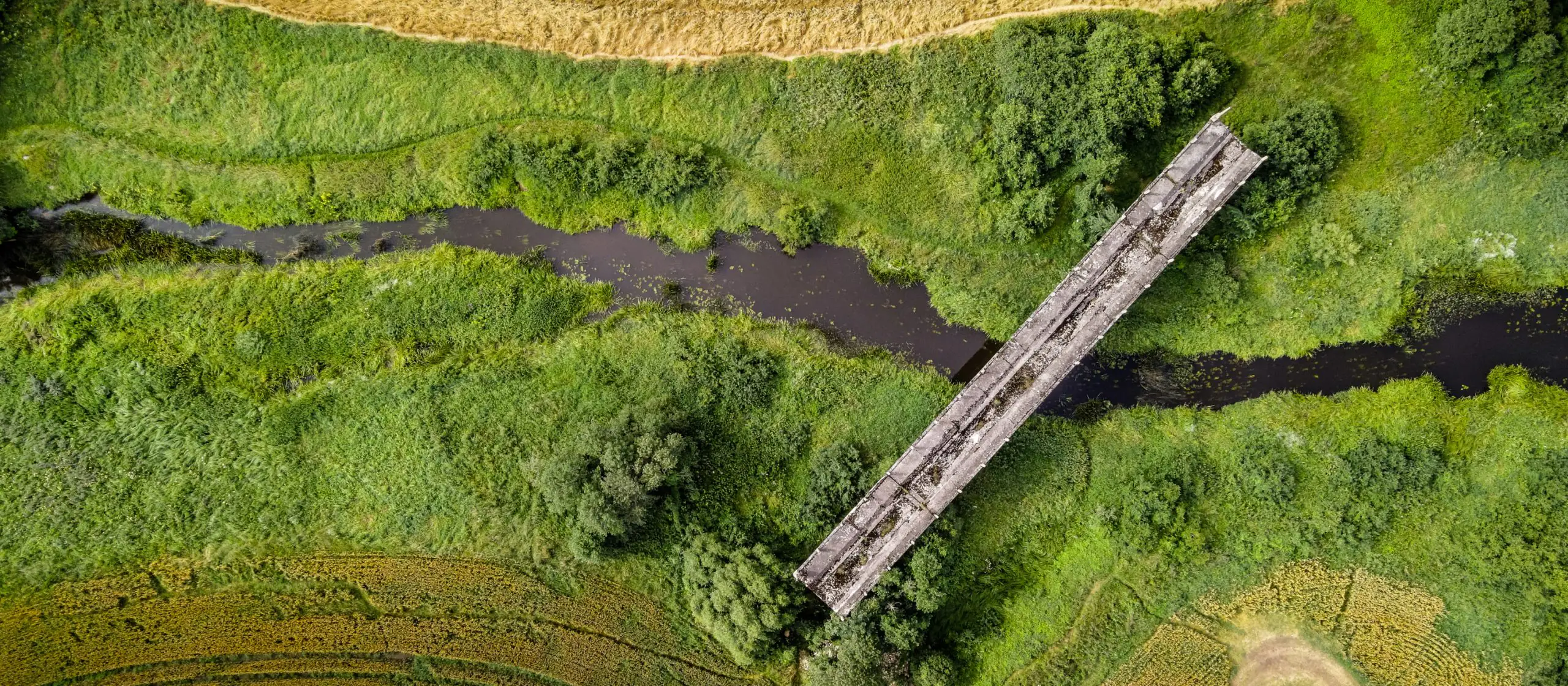
stock.adobe.com
Abava Primeval Valley landscape
In a narrow gorge between two uplands of Kurzeme is a cozy and picturesque valley of the Abava River, the banks of which were favored by the ancestors of the Kurs many centuries ago. This deep and dissected basin has an expressive shape: on both sides of the valley territory are pierced by small rivulets with gurgling waterfalls, flowing through fields and oak forests.
The river and its valley had an important transportation role—it was the most accessible way to get from Kurzeme to Zemgale. That is why there are so many ancient settlements, remains of castles, defensive fortifications and burial grounds.
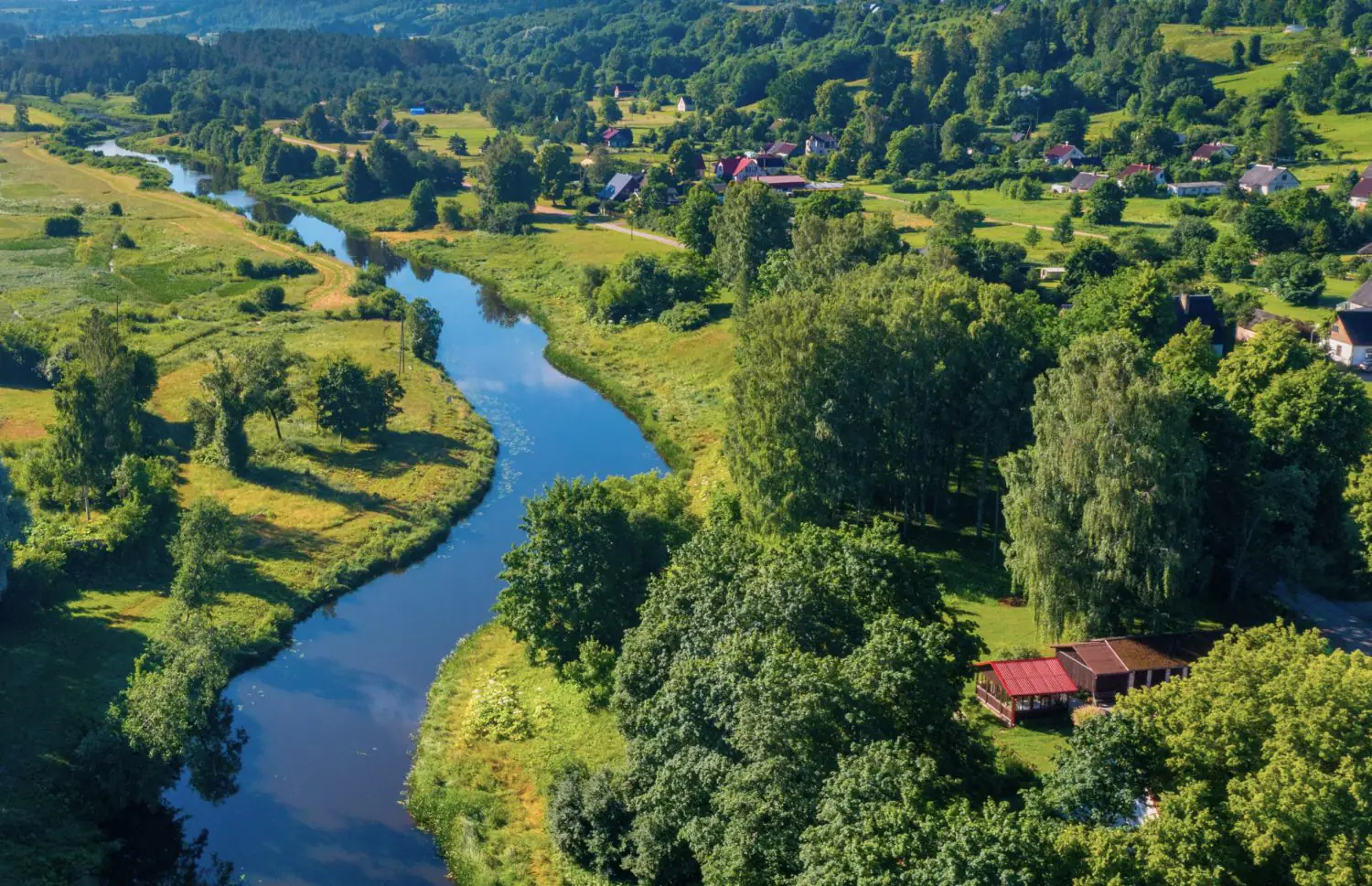
stock.adobe.com
In the neighborhood of Sabile on the territory of the Pedvāle estate there is an open-air museum with abstract sculptures, stylistically echoing the natural landscapes and local architecture. Sabile itself is definitely worth a visit—it is a small cozy town with narrow streets, elements of Roma culture (it has the largest share of Roma in the country—about 6%), apple orchards and vineyards on the open ground. They make excellent cider and wine here.
The valley reaches its deepest depth in the area between Kandava and Veģi—45–58 meters. There are several points with panoramic views, as well as water rapids and waterfalls. The whole valley is full of beautiful natural and cultural-historical landscapes and exudes the spirit of peaceful antiquity.

stock.adobe.com
Gauja Primeval Valley landscape
One of the main visiting cards of Latvia is the stunning nature of the Gauja River Valley. Its waterfalls, rapids, rocky outcrops and cliffs complement the ancient towns and castles of Vidzeme—the combination of such beauties is fascinating. The Gauja is compared to other beautiful river landscapes in Europe, such as the Rhine River near Lorelei Rock. Gauja means a lot to the culture of the Latvian nation—it is not without reason that artists and poets dedicate numerous works to it.
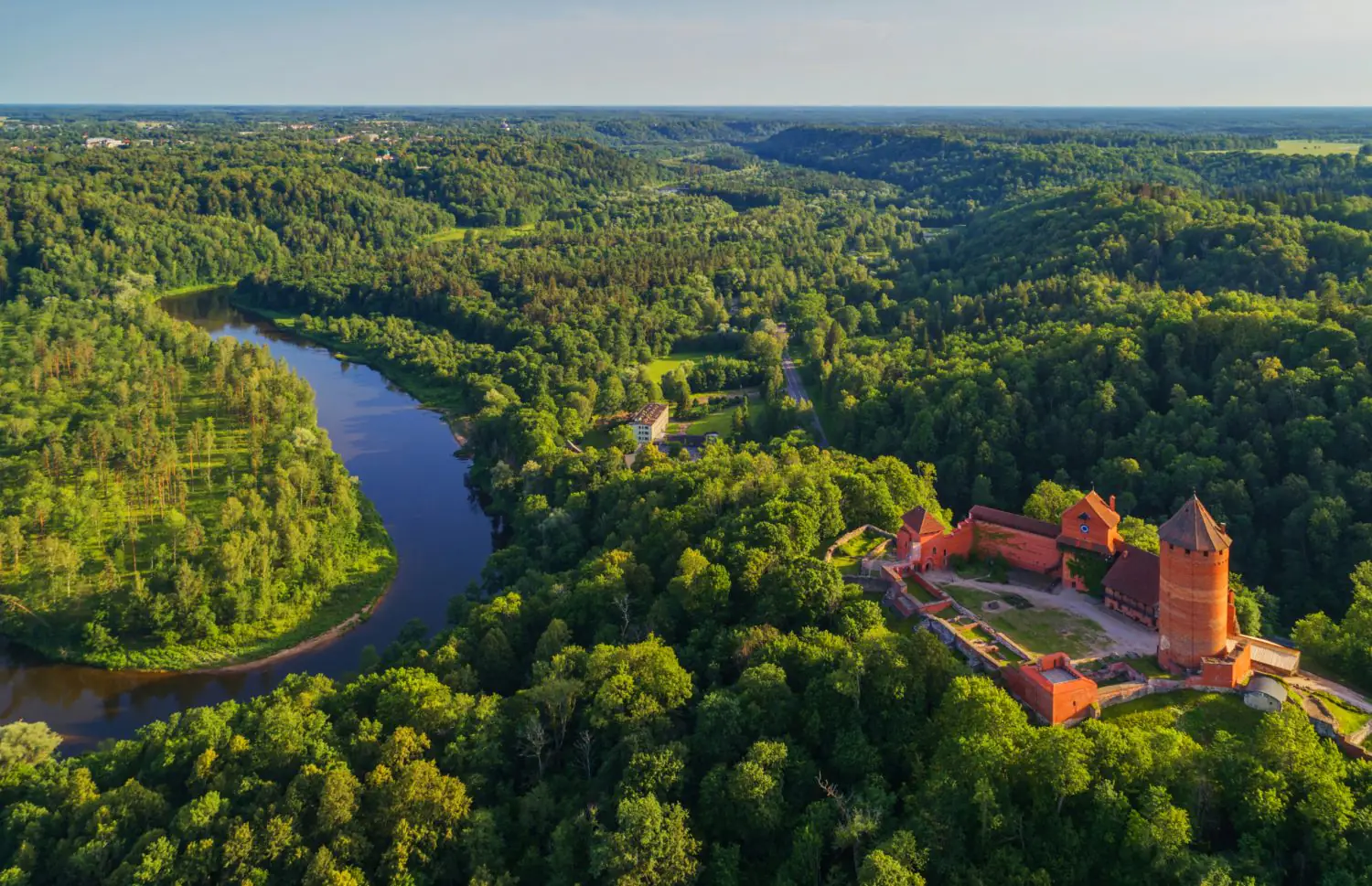
stock.adobe.com
The river valley was formed about 13800 years ago after a glacier descended, cutting its way through geological sediments. As a result, ancient rocks of various structures and colors were exposed, which can be seen to this day. The depth of the valley near Sigulda reaches 85 meters, which makes it the deepest in the Baltic States. Light-colored carbonate dolomites are found on the left bank from the mouth of the Rauna River to Sigulda. Red, yellow, gray-white Devonian sandstones are common on both sides. Such a variety of stones is not found anywhere else in the region of the southern coast of the Baltic Sea, especially in such a concentration.
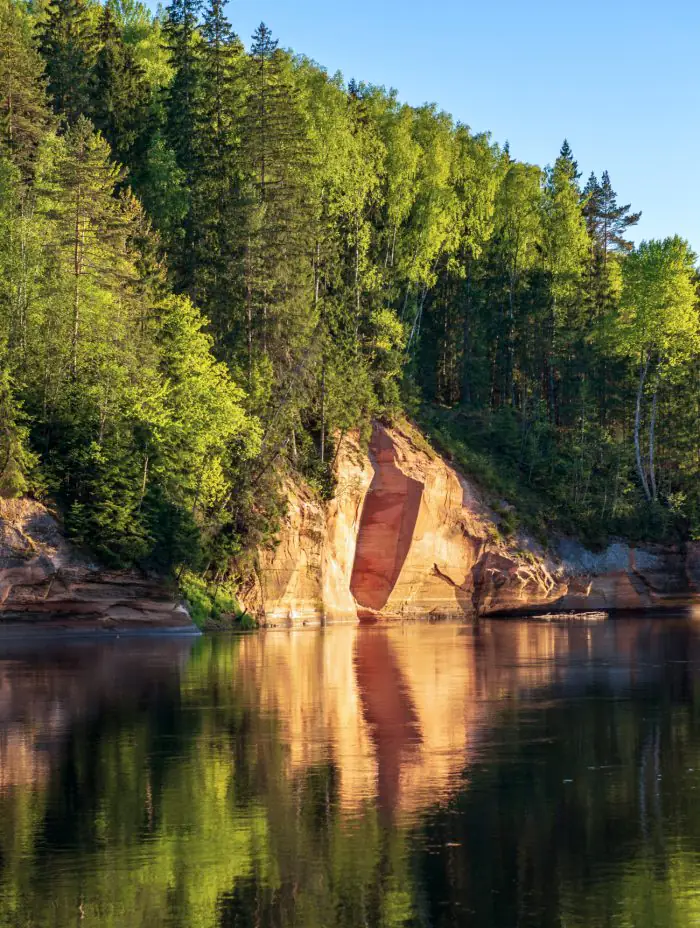
stock.adobe.com
Autumn adds even more colors—at this time the valley is especially crowded with tourists. The diversity of the geology and chemistry of the underground springs determines the plant diversity. Willows are mostly found along the riverbank, while pines, spruces, birches, oaks, ash and maples line the hillsides and terraces: each type of tree contributes to the mosaic of the landscape.
The territory of the Gauja Valley has been inhabited since ancient times, which is evident from the abundance of settlements, burial mounds, castles, ancient fortifications, burials and other cultural and historical sights.
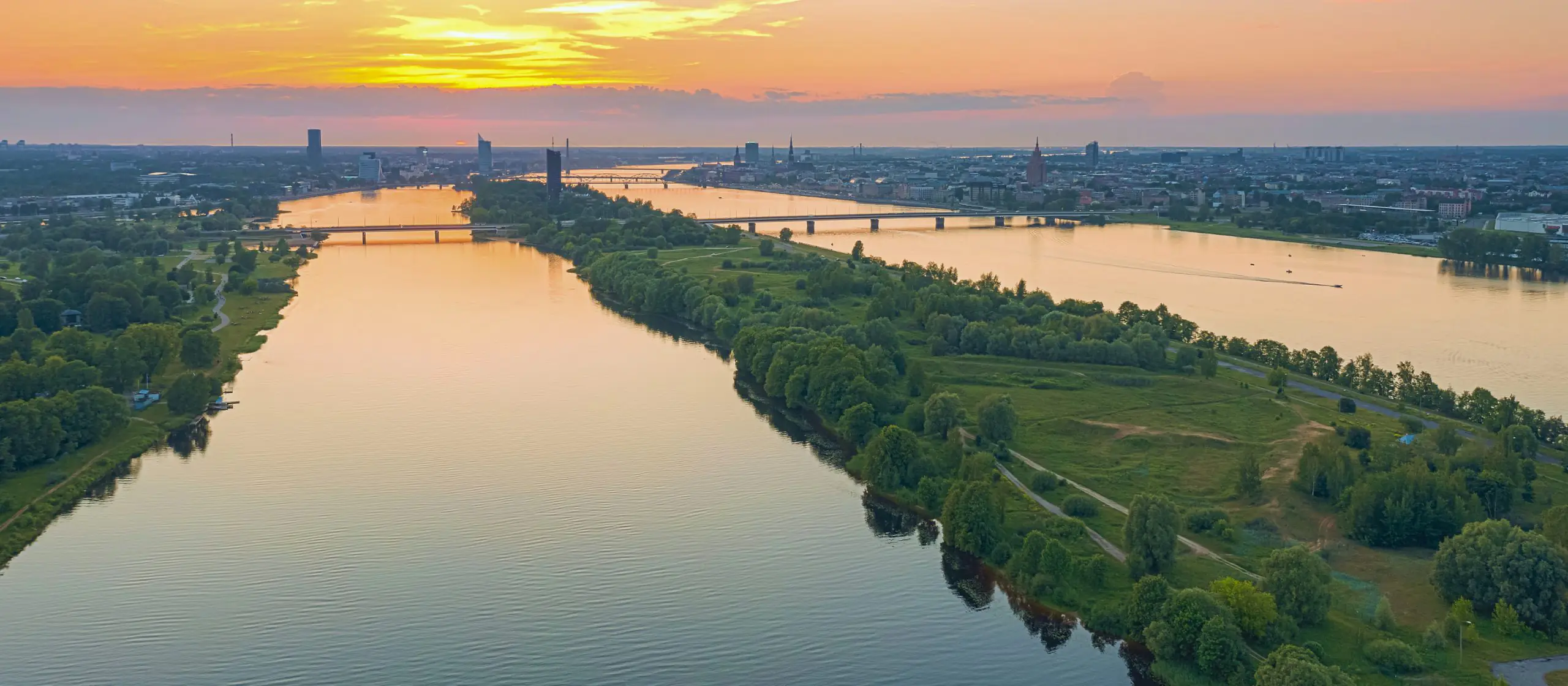
stock.adobe.com
The Daugava River landscape
It is the largest and most important river in Latvian history. It starts in the Valdai Hills and flows through Russia and Belarus. Latvia accounts for about 352 kilometers of its length. In Krāslava Municipality, the Daugava is about 200 meters wide and here it is very winding—it winds around forested hills. Closer to Riga, the river straightens out and its width reaches 700 meters.
On the multi-kilometer stretch between Daugavpils and Pļaviņas the river banks are rather low and flat. In the Jēkabpils area, large islands begin to form, and tons of ice collide with them in spring, forming large jams. Because of this, floods often occur upstream. In some years Pļaviņas also faces the threat of flooding.
The landscapes along the River Daugava have been strongly affected by three hydroelectric power plants: Ķegums (built back in the second half of the 1930s), Riga (1974) and Pļaviņas (1966). The construction of the latter resulted in the flooding of the legendary Staburags cliff, a place of strength for many generations of Latvians.
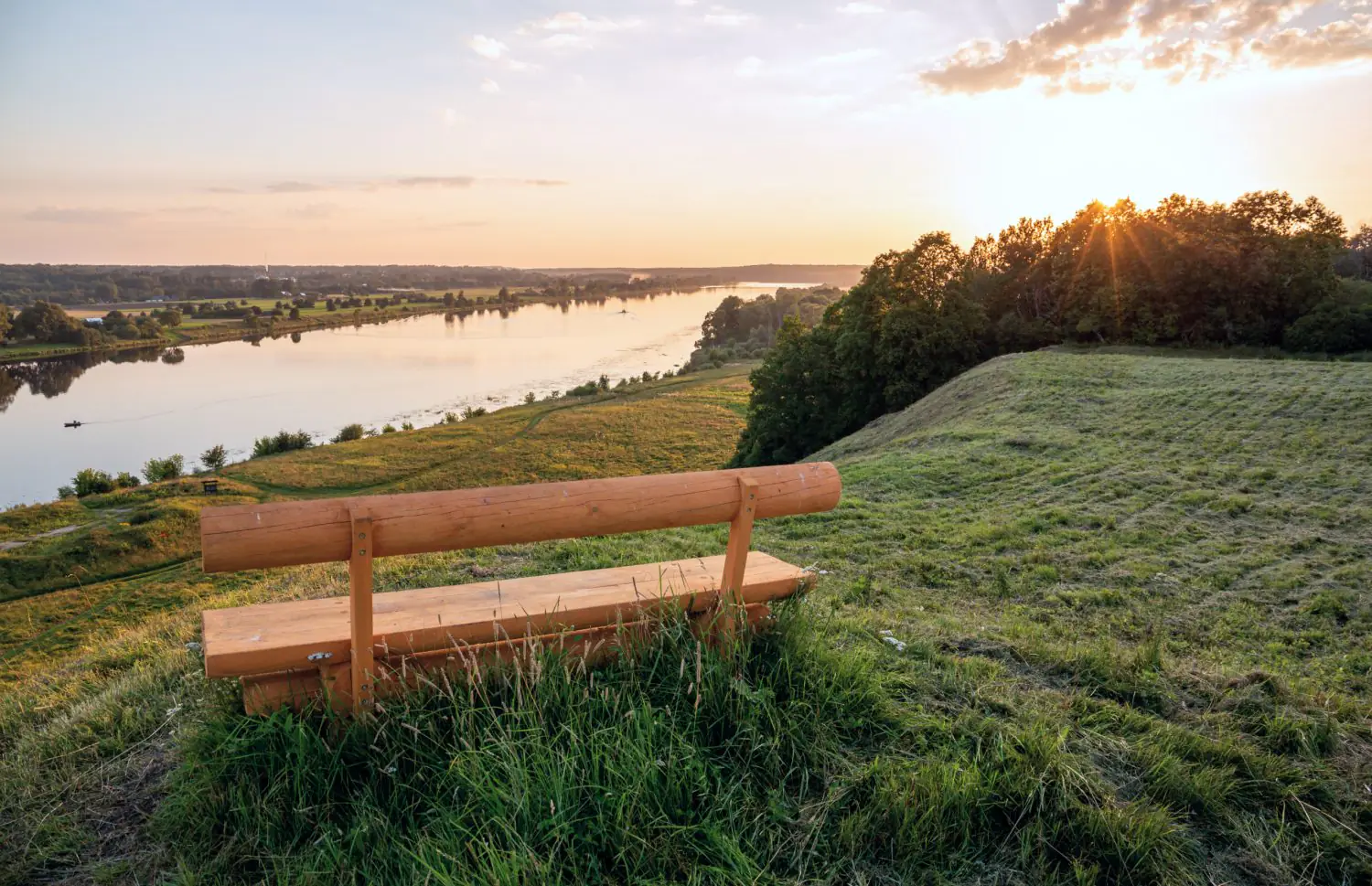
stock.adobe.com
The high rocky shores were almost completely submerged, hiding the stunning rock on which the ancient Koknese Castle stands. But even to this day the winding section of the Daugava between Pļaviņas and Jaunjelgava is characterized by stunning beauty. Especially impressive views can be seen from the top of the mounds near Skrīveri. Downstream, at the ruins of Lielvārde Castle, we recommend admiring the high banks during the golden autumn.
The town of Pļaviņas is interesting for its boulder architecture made of local light-colored dolomite taken from the rocky shores. The buildings made by people organically continue the creations of nature.
Hydroelectric power plants have not only ruined the former beauty of the river, but also created new ones. For example, in Aizkraukle, a picturesque backwater has formed, which is especially pleasant to admire from the shore at the local history and art museum.
Near Ikšķile, the oldest church in Latvia was flooded. Now it stands on a low island, and during the shoaling of the river it can be reached by the remains of an old alley.
On the territory of Riga, the Daugava forms many islands, each of which is unique in its own way. On Ķīpsala there are many marvelous wooden houses from the XVIII–XX centuries. On Zaķusala you can hide from the hustle and bustle of the city and have a picnic at the base of the majestic TV tower. Kundziņsala will surprise you with the contrast of harbor buildings and small cottages.
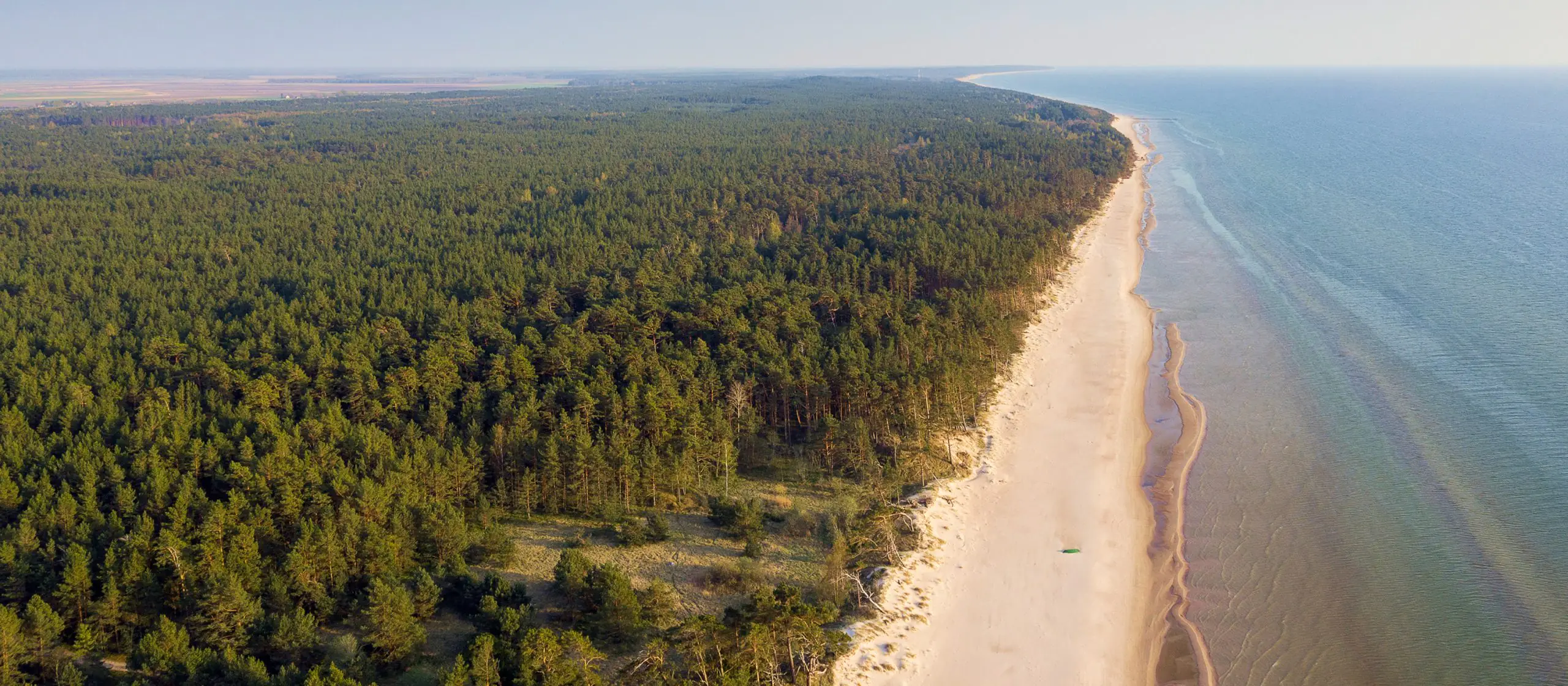
stock.adobe.com
The Seacoast landscape
The length of Latvia’s coastline along the sea is about 500 kilometers. Along its length you can find steep cliffs, wide sandy beaches, reed-covered river mouths with noisy bird markets, rocky shores and even green dunes—forested shores of the ancient Littorina Sea, which existed between 8500–4000 years ago. We told about one of such green dunes in our guide to the most interesting nature routes in Jūrmala.
Among the most picturesque seashores in Latvia is a long stretch near Jūrkalne. The height of the steep slope here reaches 20 meters. It is constantly eroded by the sea and during the year the shore retreats several meters into the depth of the land. On the summer solstice festival Līgo Day, folk festivities are regularly organized here with the launching of a firewheel into the water.
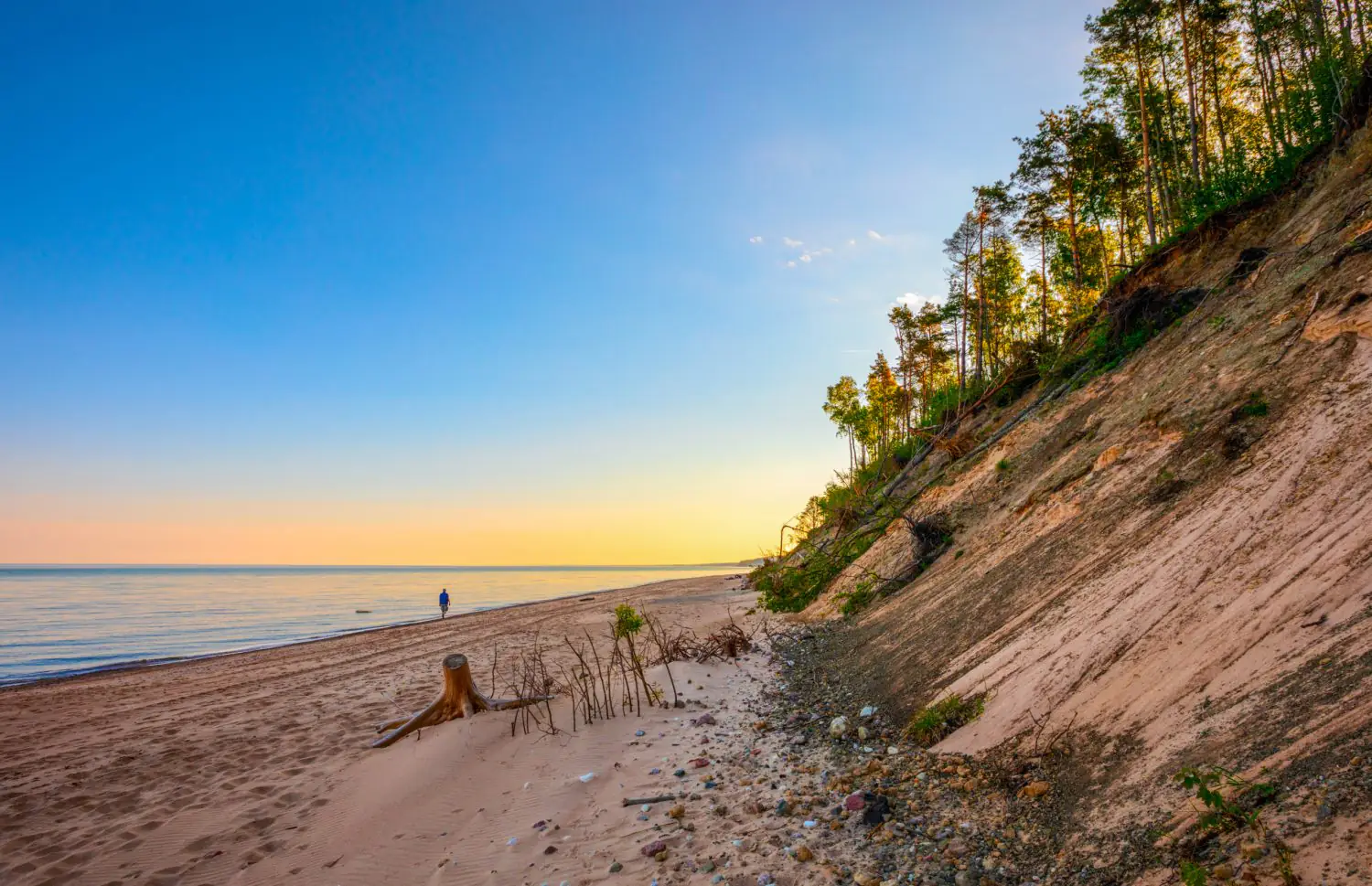
stock.adobe.com
In the Vidzeme part of the coast, there is also an area with a steep slope—the red rocks of Veczemju klintis, made of Devonian sandstone. They are notable for their shallow grottoes, overhung by twisted roots of pine trees. The local sandy beach has many small stones.
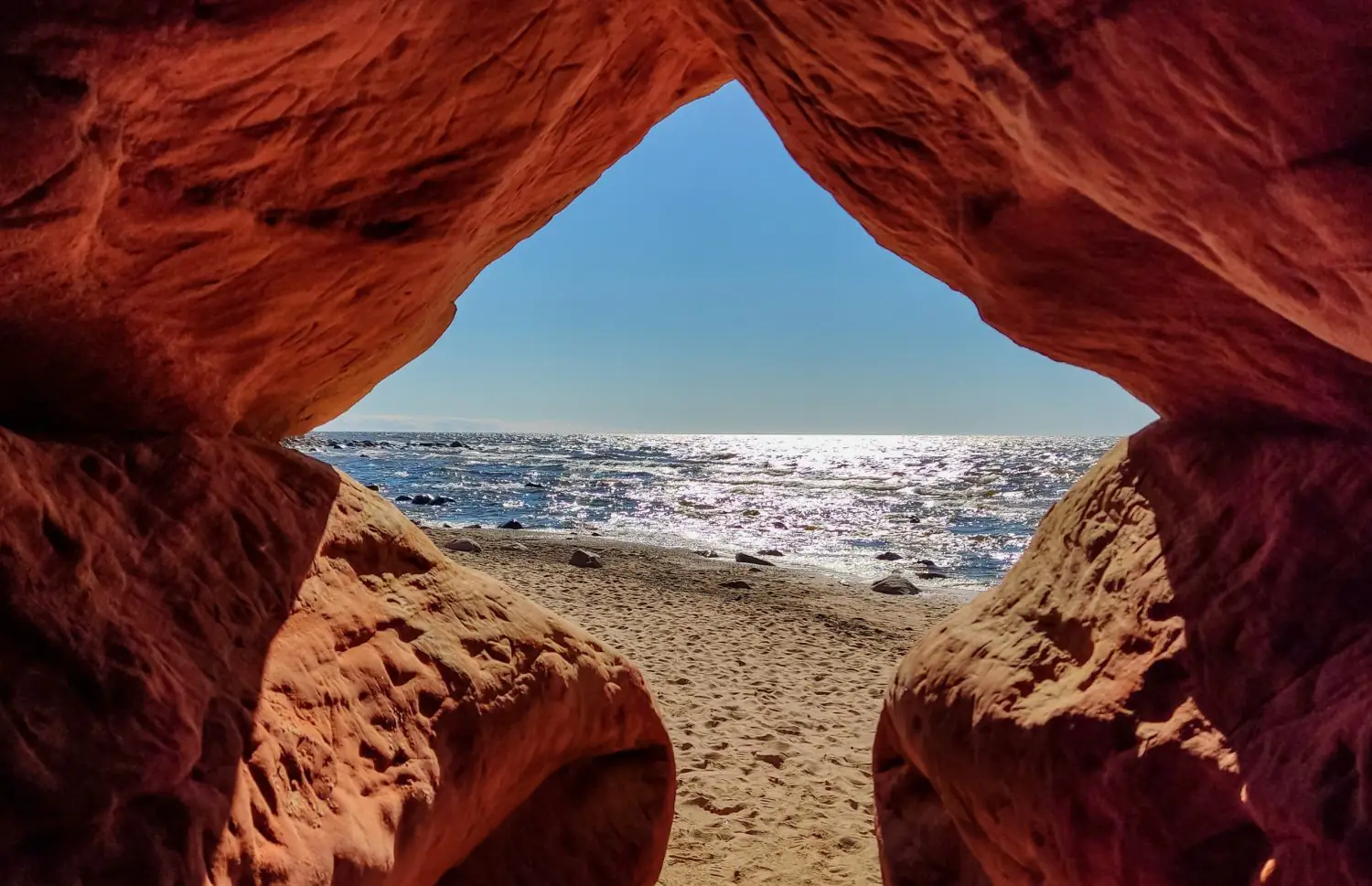
stock.adobe.com
Stony shores with rounded boulders—the result of the melting of an ancient glacier—are found in a few places: in the area of Kaltene, Engure, Salacgrīva and some other settlements.
At the mouth of the Lielupe River there is the famous White Dune 17 meters high. It was formed in 1757 due to a change in the flow of one of the most full-flowing rivers in Latvia. From its top you can enjoy beautiful views of the Buļļuciems and the Gulf of Riga.
To the south of Ainaži, the Randu pļavas coastal meadows, unique for Latvia, stretch for several kilometers and consist of grassy areas, small lagoons, mudflats, reeds and sand.
One of the largest sandbanks is Cape Kolka. Here the waters of the Gulf of Riga meet the Baltic Sea, forming perpendicular waves, which are clearly visible from the extreme point of the cape.

stock.adobe.com
Numerous birds nest in shallow coastal lakes (e.g. Engure, Pape). These are ancient lagoons separated from the sea by sand dunes. Pieces of amber can be found in such sea lakes and all along the Kurzeme coast.
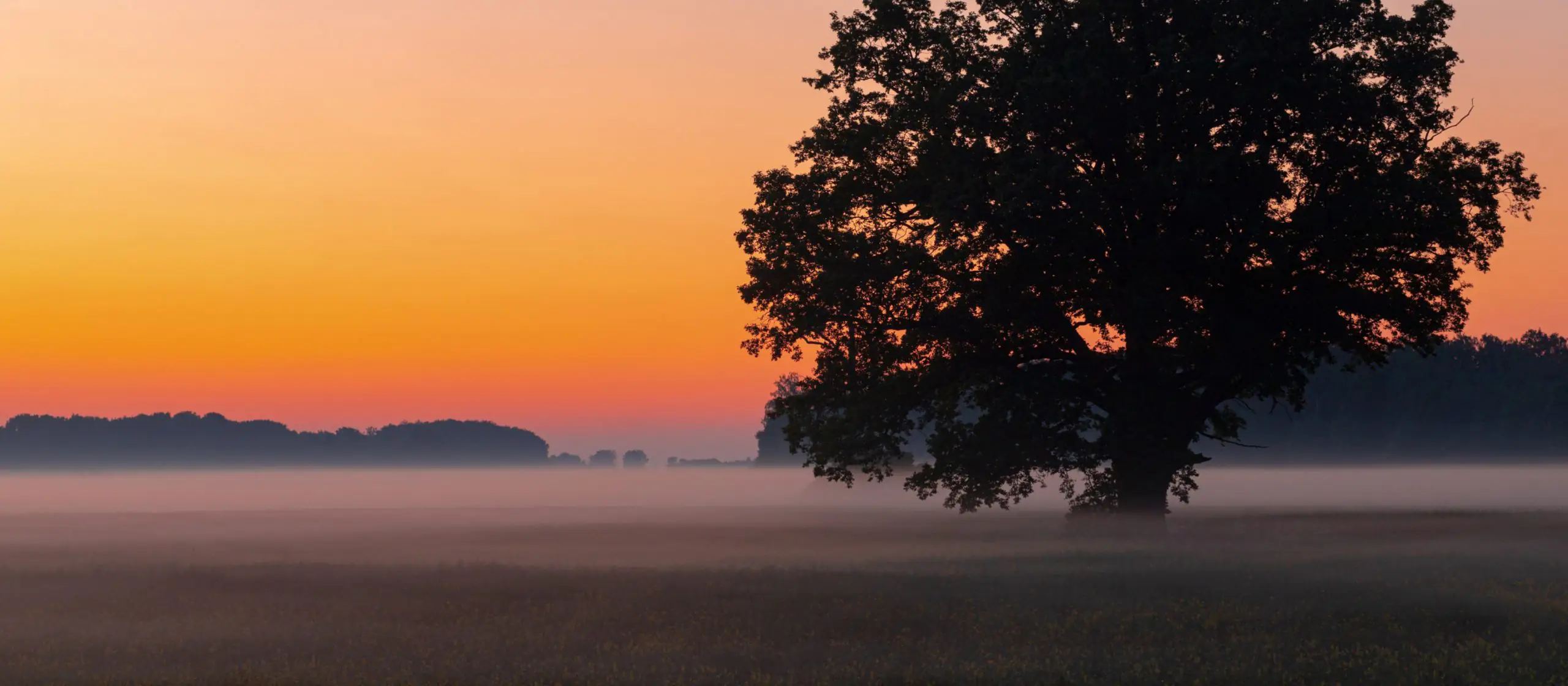
stock.adobe.com
The landscape of Zemgale Lowland
Latvia has a region that is associated with freedom, vastness, bread and strong peasant prosperity at the same time. It is the main breadbasket of the country—Zemgale. Nowadays the territory is perceived as a symbol of change and independence: in the period of 1920–1930s Zemgale lowland was actively praised as the salt of Latvia, a millstone and an engine on the way of Latvian people to progress, prosperity and liberation.
The pattern of the plain is defined by grain fields with orchards, while groves, forest belts, roads, alleys and forests of river valleys contour the area. The territory is a depression facing the Gulf of Riga. There used to be a large lake of glacial origin, which left many oily clay deposits. This predetermined the agricultural destiny of the region.
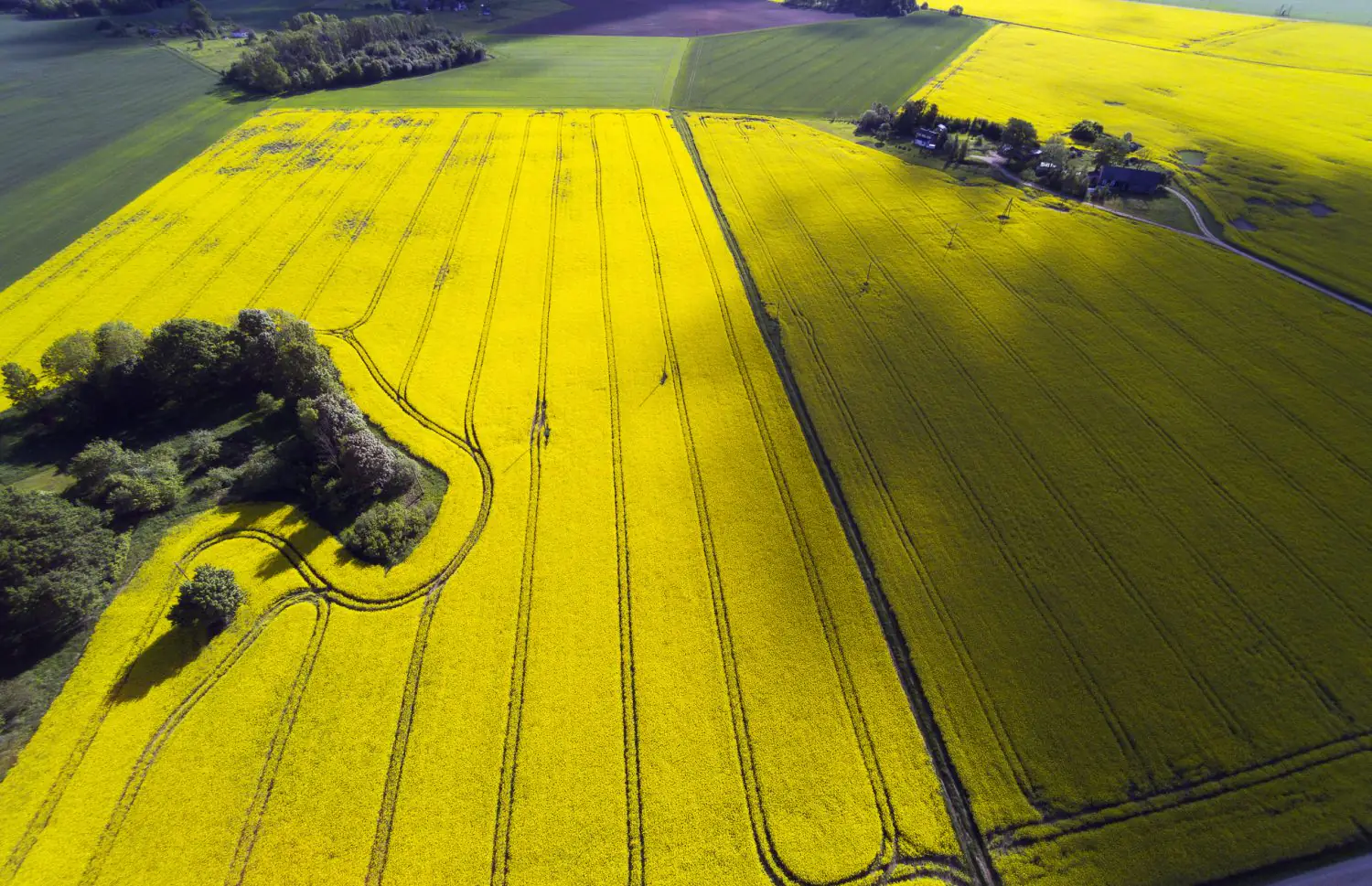
stock.adobe.com
The central artery of Zemgale is the slow and full-flowing Lielupe River, formed by the confluence of the Mūsa and Mēmele Rivers near Bauska. Many channels diverge from the Lielupe River, forming shallow incised river valleys closer to the uplands.
The richness and fertility of the land contributed to the emergence of outstanding architecture: Rundāle Palace, Bauska Castle, Mežotne Manor and many other colorful buildings. The rural lifestyle of peasants and the vast sky with snow-white clouds have been sung by many Zemgale poets and prose writers: for example, Anna Brigadere, Edvarts Virza, Vilis Plūdonis.
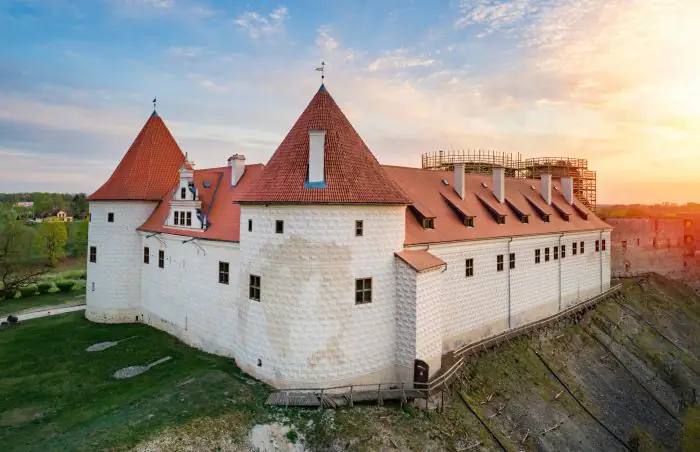
stock.adobe.com
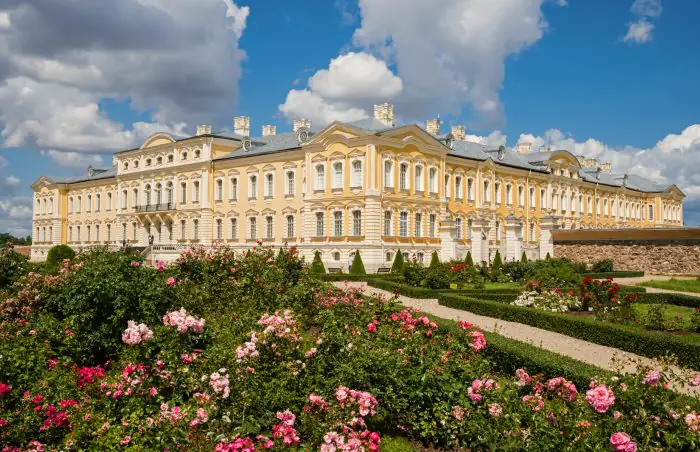
stock.adobe.com
The Tērvete district is a gem of the area: ancient settlement, castle ruins, Kalnamuiža manor house and picturesque pine forest—don’t miss the opportunity to visit this landmark of Zemgale.


